Anti-reflection coated windows for observing bands 6, 7, 8 and 9 of the Atacama Large Millimeter Array (ALMA) in Chile - three hundred and sixty of them!
High up in the Chilean Andes, in a remote and inhospitable place ... well to humankind anyway ... known as Chajnantor, engineers, scientists, astronomers and many more personnel have been, and are, busy building a telescope. Immediate thoughts might bring to mind the classic reflecting telescopes and refracting telescopes that work in the visible part of the spectrum. Images of the domed buildings at high altitude such as Mount Wilson Observatory in California, Mauna Kea Observatory in Hawaii, and Great Canaries Telescope are what might come to mind, or perhaps the large receiver dishes used in radio astronomy, such as the Arizona Radio Observatory, Jodrell Bank near Manchester in the UK, the 305m diameter Arecibo telescope in Puerto Rico that is built into a natural limestone hollow, or the proposed Square Kilometer Array to be sited in Australia.
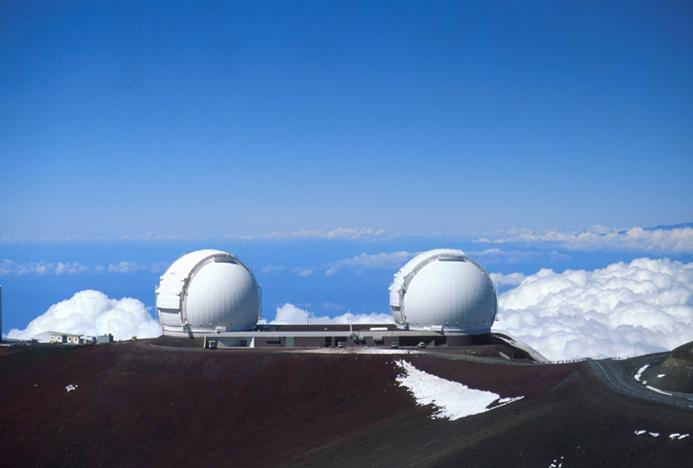
The Keck Observatory on Mauna Kea, Hawaii
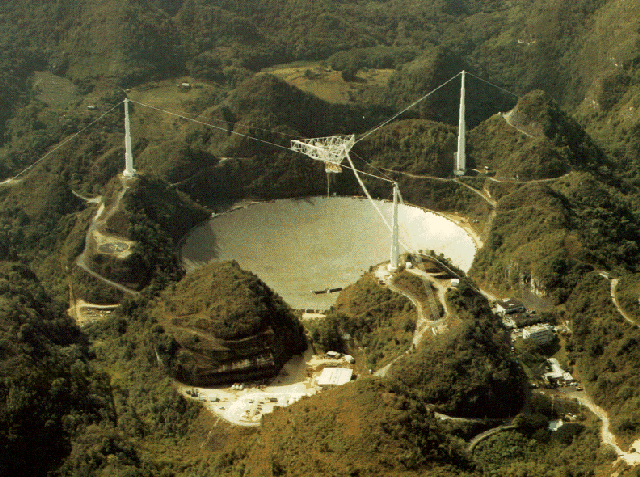
The Arecibo Radio Telescope in Puerto Rico
However, the electromagnetic spectrum is a continuous source of radiation with frequencies covering several orders of magnitude. Sources of radiation can occur in the universe at any of these frequencies. Most frequencies are all but completely absorbed by the earths atmosphere, though atmospheric transmission windows exist allowing certain frequencies to pass virtually unimpeded through the atmosphere. Windows exist in the visible (where our eyes are responsive), the radio and the infrared, hence ground based astronomy at these frequencies is more accessible. X-ray and gamma ray observations for example are high cost because they need to be carried out from space.
Building telescopes at high altitude serves several useful scientific purposes. Atmospheric transmission increases at high altitude, hence observation at some other frequencies becomes possible. At Chajnantor the Atacama Large Millimeter Array is being constructed to carry out astronomy in the mm wave / terahertz region of the spectrum. Ten bands have been identified for observation. The initial array configuration consists of sixty six antennas. The bands are between 30GHz (1mm) and 950GHz (0.3mm) as given in the table below.
| Band | Frequency / GHz |
|
1 2 3 4 5 6 7 8 9 10 |
31.3 - 45 67 - 90 84 - 116 125 - 163 163 - 211 211 - 275 275 - 373 385 - 500 602 - 720 787 - 950 |
The telescope is also remote from sources of light pollution and atmospheric pollution, and the higher you go the more of the earth atmosphere is below you. Hence scattering and absorption of radiation by the atmosphere is reduced because less gas and polluting materials are between the light source and the telescope. Water vapour is a good absorber, hence the drier the air the better. The water vapour in a column of air decreases with altitude, though this also varies as the weather changes, which reduces the number of useful days for observation.
QMC Involvement
QMC has been commisioned to provide ninety anti-reflection coated, quartz vacuum windows, for each of bands 6, 7, 8 and 9 above.
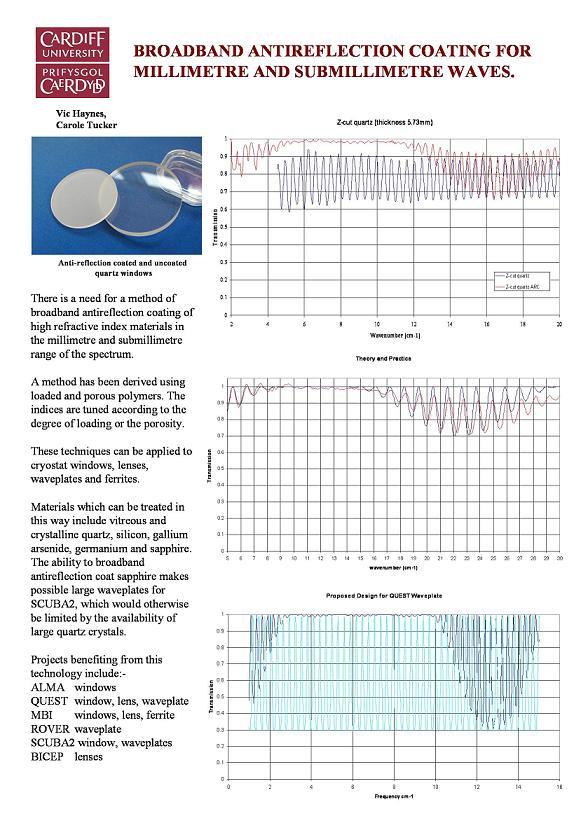
The quartz windows are supplied by a sub-contractor with tight specification on thickness and planarity. The quartz is then roughened before applying the anti-reflection coating to both sides of the window. The window is then mounted into the O-ring sealed vacuum support frame. The assembly is then vacuum tested, and finally optically tested. Completed components are mounted in shockboxes for dispatch.
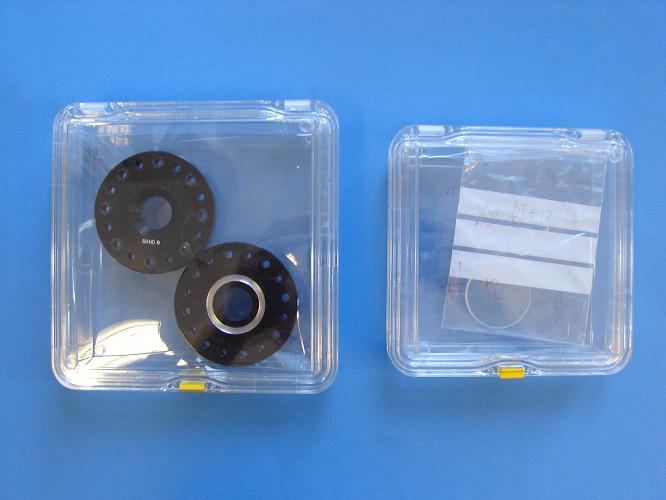
Band 9 mounting frame (left) and coated quartz vacuum window (right) in shockboxes
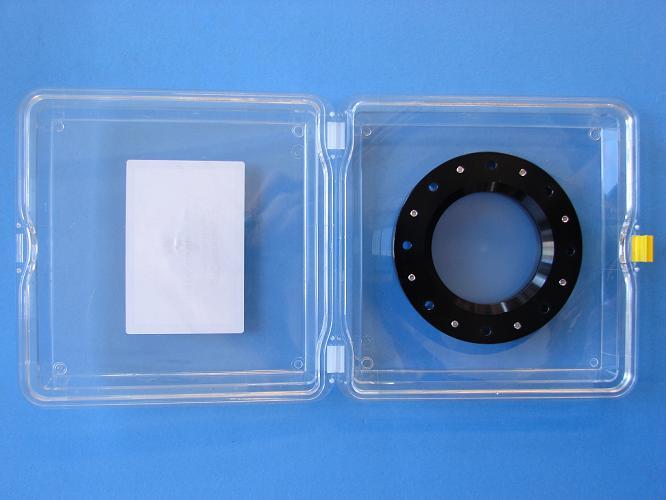
Completed quartz vacuum window assembly in shockbox ready for dispatch
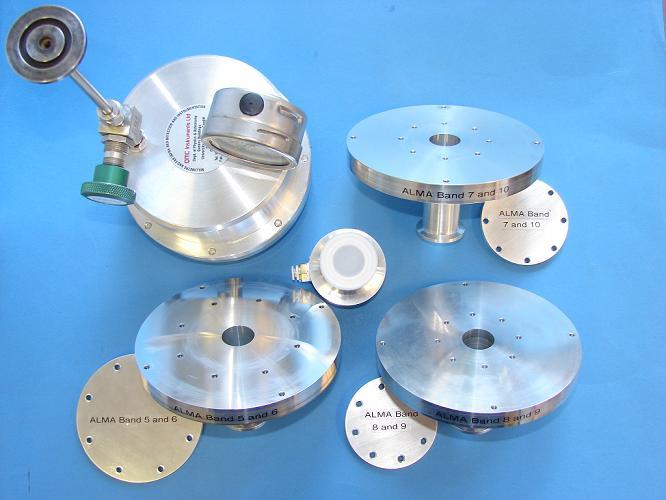
Edited Sep09